When a storm hits, the aftermath can often leave homeowners grappling with damage and subsequent repairs. Especially in regions like Tampa, FL, where storms are a frequent threat, understanding the specifics of your homeowner’s insurance policy is not just beneficial—it’s imperative. This section will help you navigate the complex terrain of storm damage coverage, ensuring that you are well-prepared before, during, and after a storm strikes.
Knowing the extent of what your policy covers, the process for filing claims, and what types of damage are specifically included or excluded can make a significant difference in how effectively you can respond to storm damages. From roof repair insurance coverage to exclusions for certain types of weather impacts, we’ll explore the critical aspects of your insurance policy that affect storm damage claims.
Whether you’re a new homeowner or have been living in your home for years, understanding the nuances of your homeowner’s insurance in relation to storm damage is crucial. This guide aims to provide you with essential storm damage insurance claim tips and insights into how to file a homeowner’s insurance claim for storm damage effectively. Stay tuned as we dive into the types of storm damage covered by homeowner’s insurance and what you might expect in terms of support from your policy.
Key Elements of Your Homeowner’s Insurance Policy
Understanding the components of your homeowner’s insurance policy is essential, especially considering the unique challenges posed by storm damage. A typical policy includes coverage for the structure of your home, personal belongings, liability protection, and additional living expenses if you are temporarily unable to live in your home due to damage. It’s crucial to know how these elements can come into play in storm scenarios.
Structural coverage is vital in areas like Tampa, FL, where storms can cause significant damage to homes. This part of your policy pays for the repair or replacement of damaged parts of your home, such as roofs, windows, and walls. Roof repair insurance coverage is particularly relevant, as the roof is often the most vulnerable part of a building during a storm. Understanding your policy’s specifics regarding roof damage can help you manage repairs more effectively and speed up the recovery process.
Additionally, it’s important to be aware of your home insurance policy’s exclusions for storm damage. Certain types of damage, such as from flooding or neglect in maintenance, may not be covered, necessitating additional riders or policies for complete protection. By familiarizing yourself with these details, you can ensure that you are adequately prepared to handle storm damage claims and protect your property from future threats.
Understanding the Types of Storm Damage Covered
Storm damage can manifest in several forms, and knowing what your homeowner’s insurance policy covers is key to preparing for and recovering from storm events. Generally, homeowner’s insurance covers damages caused by wind, hail, and rain—common occurrences in storm-prone areas like Tampa, FL. However, it’s crucial to review the specifics of your policy to understand the full extent of coverage.
For example, roof damage is a frequent issue during storms and is typically covered under the ‘dwelling’ portion of your homeowner’s insurance, which includes roof repair insurance coverage. If shingles are blown away or a tree falls on your roof, these are scenarios where your insurance policy would likely help cover the costs of repairs. On the other hand, damages from flooding, often caused by storm surges or heavy rains, may not be automatically covered and might require additional flood insurance.
It’s also important to consider the process of filing a homeowner’s insurance claim for storm damage. Documenting the damage extensively through photos and detailed notes can aid in the claims process. Utilizing storm damage insurance claims tips, such as keeping receipts for any repairs or temporary measures taken, can also be beneficial. By understanding the types of storm damage covered by your homeowner’s insurance and preparing accordingly, you can help ensure a smoother recovery process after a storm impacts your home.
Navigating Policy Exclusions for Storm Damage
Understanding the exclusions in your homeowner’s insurance policy is crucial, particularly when it comes to storm damage. Many policies include specific exclusions that can significantly impact your coverage and potential out-of-pocket expenses following a storm. Common exclusions often relate to the causes of damage, such as flooding.
For homeowners in Tampa, FL, being aware of these exclusions is essential due to the high frequency of storms. For instance, while your policy might cover wind damage, it may not cover flood damage unless you have secured supplemental coverage. This distinction is vital in ensuring that you are not caught off guard when you file a claim. Other typical exclusions might include damage due to lack of maintenance or wear and tear, which insurance companies may deem preventable.
The implications of these exclusions for homeowners are significant. Without proper coverage, you could face substantial financial burdens repairing storm damage. It’s advisable to review your insurance policy thoroughly and consider additional coverage options if necessary. By understanding home insurance policy exclusions for storm damage, you can better prepare for the financial impact of storms and ensure that your property is adequately protected.
How to File a Claim for Storm Damage
Filing a homeowner’s insurance claim for storm damage can seem daunting, but with a structured approach, it can be managed effectively. The first step is to promptly document the extent of the damage. Take photographs, jot down details of the impact, and preserve any broken parts if feasible. This documentation will be crucial when communicating with your insurance provider. Contacting a professional roofing contractor for a roof inspection is also a good idea, as they can verify your findings and present a report to your insurance company.
Contact your insurance company immediately to report the storm damage. Provide them with your preliminary documentation. Most insurers have a deadline for filing claims, so timely communication is critical. They will likely send an adjuster to assess the damage, which is a good opportunity to present your collected evidence.
It’s also beneficial to understand the types of storm damage typically covered under your policy, such as roof damage or broken windows. Knowing this can help streamline the claims process and set realistic expectations of what expenses might be covered.
Throughout the claims process, maintain detailed records of all correspondence with your insurance company, including dates of communication and summaries of discussions. This record can be invaluable if disputes arise or further clarification is needed. Lastly, if the damage is extensive, consider seeking professional estimates from contractors, which can provide a clearer scope of the necessary repairs and associated costs.
The Role of Roofing Contractors in Successful Claims
When a severe storm hits Tampa, FL, your roof often takes the brunt of the damage. This is when the expertise of a roofing contractor becomes crucial, not only for repairing the damage but also for guiding you through the often complex process of filing an insurance claim. Roofing contractors play a vital role in ensuring that homeowners get the compensation they deserve for roof repairs or replacements.
After a storm, it’s crucial to get a professional roof inspection. A reputable roofing contractor will thoroughly assess the extent of the damage, documenting every detail with photographs and written reports. This documentation is essential for filing a successful insurance claim, as it provides the evidence needed to prove that the damage was caused by the storm and is covered under your policy.
Roofing contractors are also well-versed in the language of insurance companies. They understand what information adjusters need and how to present it effectively, ensuring that no critical details are overlooked. By working closely with your insurance company, roofing contractors can help expedite the claims process and maximize the likelihood that your claim will be approved.
Furthermore, a professional roofing contractor can assist in identifying potential issues that might not be immediately visible, such as underlying structural damage or water intrusion, which could lead to more severe problems if left unaddressed. By catching these issues early, they help ensure that your roof repair or replacement is fully covered by your insurance, saving you from unexpected out-of-pocket expenses.
With the right preparation and roofing contractor, managing roof repair claims can be a straightforward process, ensuring your home is repaired promptly and effectively.
Preventive Measures and Policy Review Tips
To mitigate the effects of storm damage and ensure your homeowner’s insurance policy adequately covers such events, proactive measures and regular policy reviews are essential. This section outlines practical steps you can take to enhance your preparedness for storm-related damages and ensure your insurance coverage meets your needs.
It’s advisable to regularly review and update your homeowner’s insurance policy. This ensures your coverage aligns with any recent changes to your property or to the valuation of your home.
Understanding how to file a homeowner’s insurance claim for storm damage is crucial. Ensure that you are familiar with the types of storm damage covered by your homeowner’s insurance, such as roof repair or structural damage. Additionally, be aware of any exclusions that might affect your claims, like damages from floods unless explicitly covered under your policy.
Regular audits of your policy can help you identify if additional riders or updates are necessary to enhance your coverage. This might include adjusting your policy to cover emerging risks or changes in property value. By actively engaging with your insurance provider and seeking clarity on complex aspects such as roof repair insurance coverage and home insurance policy exclusions for storm damage, you can significantly reduce the potential financial impact of future storms.
Roof Insurance Claim Assistance for Tampa Homeowners
Ensure your home is protected from storm damage with SouthShore Roofing & Exteriors. Call us today at (813) 400-3329 to schedule a free consultation and review your homeowner’s insurance policy. Don’t wait until the next storm hits, take proactive steps to safeguard your home and family. Our expert team will guide you through the process, from understanding your coverage to filing successful roof repair claims. Protect your investment and gain peace of mind with SouthShore Roofing & Exteriors.




